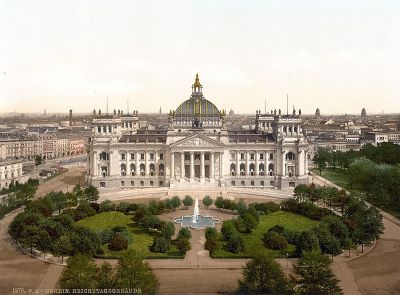Johann Ernst Gotzkowsky (1710–1775)

Prior to Gotzkowsky’s porcelain factory being established, Berlin had only one small factory which, however, was unable to compete with Meißen in terms of quality or decoration. On top of this, Meißen, including the porcelain factory and its warehouse, was besieged and captured by Prussian troops in the Seven Year War so that the richly decorated crockery arrived at the royal tables directly from there. At any rate, Johann Ernst Gotzkowsky was the first to establish a true porcelain factory in Berlin. And because he promised high wages, he soon managed to headhunt the most respected specialists from Meißen. He also managed to acquire the strictly guarded recipe for the manufacture of high-grade porcelain. However, once the new factory started production, the financial situation of its owner deteriorated dramatically. The king, whose war spending had long exceeded all limits, was no longer able to afford expensive purchases. In addition, Gotzkowsky’s finances were already under enormous strain before the factory went into production because, during the Russian siege of Berlin in 1760, he had paid for the subsistence of the Prussian garrison and the relief corps from his own private coffers. When the surrender of the city and its occupation by the Russians and Austrians were no longer able to be averted, he used his negotiating skills to ensure that the toll of 4 million thaler, which the city was supposed to pay, was reduced to 1.5 million. In the end, the toll was just 500,000 thaler, 50,000 of which were again paid by Gotzkowsky himself.[5] Thanks to this personal sacrifice, he rose up to become a prominent citizen of the city and was celebrated as a “patriotic merchant”.
However, this social standing did not save Gotzkowsky, who had largely built his fortune on high-risk transactions, from bankruptcy. At the end of the Seven Year War, he invested in Russian grain. The insolvency of the Amsterdam Bank “Gebroeders de Neufville”, who were supposed to help him finance the purchase of the warehouse, and the withdrawal of business partners from his company, plummeted Gotzkowsky into debt and forced him to sell his possessions. In 1763, the porcelain factory was bought back by Frederick II the Great himself for 225,000 thaler. The king took over all 146 employees and gave the production facility its new name as the Royal Porcelain Factory [Königliche Porzellanmanufaktur (KPM)], the name under which it still trades today.[6]
Gotzkowsky never got his fortune back. To settle his debts with the Russian creditors, he was forced to give up 317 paintings from his collection, which he had spent years building up, to Empress Catherine II, including 13 works by Rembrandt, 11 by Rubens, two by Raphael and one Titian. [7] Some of these paintings are still in the Hermitage Museum in St. Petersburg today. The end of Gotzkowsky’s career as an entrepreneur was sealed in 1766 by the financial crisis. He spent the last few years of his life in poverty and obscurity until he died in Berlin on 9 August 1775, presumably of typhoid.
Monika Stefanek, January 2022
[5] Gotzkowsky, Johann Ernst, in: The History of Berlin. Association for the History of Berlin e.V., founded in 1865, URL: https://www.diegeschichteberlins.de/geschichteberlins/persoenlichkeiten/persoenlichkeiteag/459-gotzkowsky.html (last accessed on 12/1/2022)
[6] History of KPM, in: Königliche Porzellan-Manufaktur Berlin, URL: https://en.kpm-berlin.com/pages/history (last accessed on 12/1/2022)
[7] Johann Ernst Gotzkowsky, in: Wikipedia. The Free Encyclopaedia, 22/7/2022, URL: https://de.wikipedia.org/wiki/Johann_Ernst_Gotzkowsky (last accessed on 12/1/2022)











